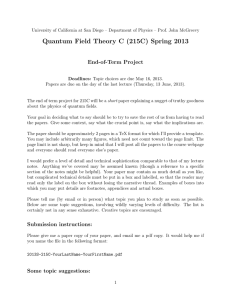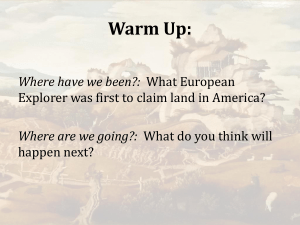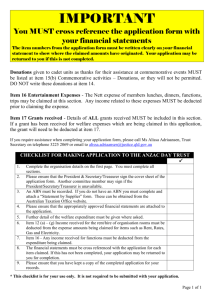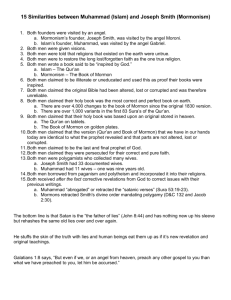Whence QFT? (239a) Spring 2014 End-of-Term Project
advertisement
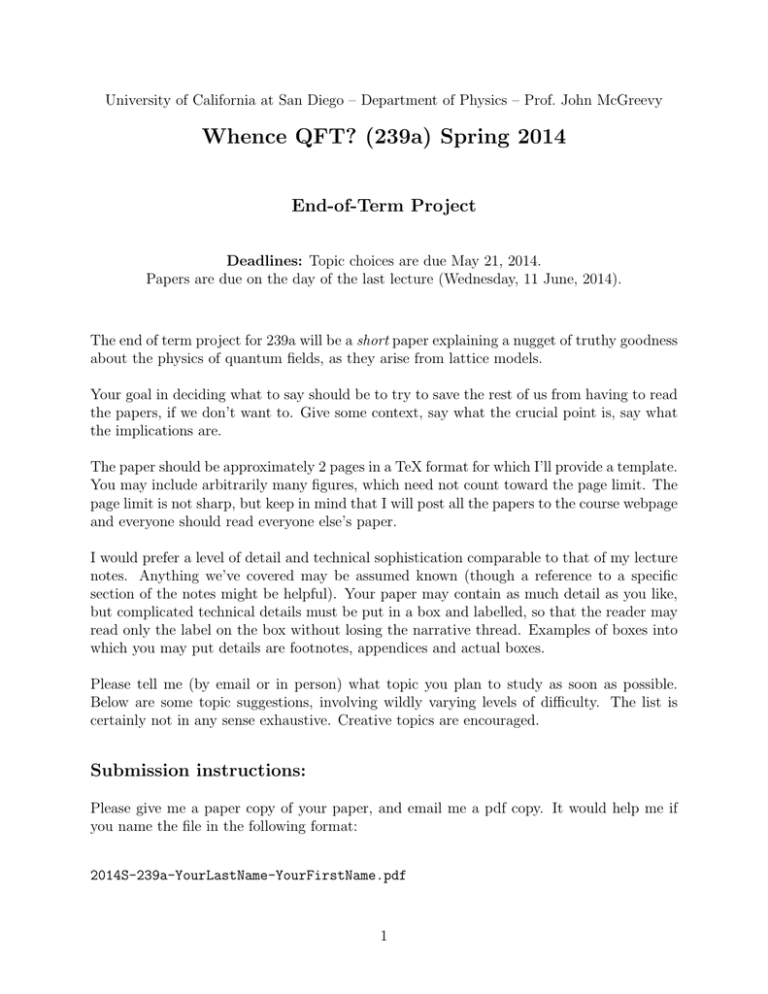
University of California at San Diego – Department of Physics – Prof. John McGreevy Whence QFT? (239a) Spring 2014 End-of-Term Project Deadlines: Topic choices are due May 21, 2014. Papers are due on the day of the last lecture (Wednesday, 11 June, 2014). The end of term project for 239a will be a short paper explaining a nugget of truthy goodness about the physics of quantum fields, as they arise from lattice models. Your goal in deciding what to say should be to try to save the rest of us from having to read the papers, if we don’t want to. Give some context, say what the crucial point is, say what the implications are. The paper should be approximately 2 pages in a TeX format for which I’ll provide a template. You may include arbitrarily many figures, which need not count toward the page limit. The page limit is not sharp, but keep in mind that I will post all the papers to the course webpage and everyone should read everyone else’s paper. I would prefer a level of detail and technical sophistication comparable to that of my lecture notes. Anything we’ve covered may be assumed known (though a reference to a specific section of the notes might be helpful). Your paper may contain as much detail as you like, but complicated technical details must be put in a box and labelled, so that the reader may read only the label on the box without losing the narrative thread. Examples of boxes into which you may put details are footnotes, appendices and actual boxes. Please tell me (by email or in person) what topic you plan to study as soon as possible. Below are some topic suggestions, involving wildly varying levels of difficulty. The list is certainly not in any sense exhaustive. Creative topics are encouraged. Submission instructions: Please give me a paper copy of your paper, and email me a pdf copy. It would help me if you name the file in the following format: 2014S-239a-YourLastName-YourFirstName.pdf 1 Some topic suggestions: Mostly this is just a list of subjects about which I would like to read papers. If you have other ideas please come talk to me about them. Anything in blue below is a link to the literature. Lists of and links to references below are intended as entry points to the literature, and not as complete citations of all good work on the subject or attribution of credit. For each paper you should of course always also read all papers which cite it12 , as well as all of the papers to which it refers. The order below is not meaningful, though I’ve tried to group related topics together. Be warned that they fluctuate wildly in sophistication; I’ve put * next to topics which require many ideas that we haven’t covered. I will keep adding to this file as I think of more. 1. Ising spectroscopy and E8 symmetry. [Zamolodchikov-Fonseca, Zamolodchikov-Fonseca, Zamolodchikov, Coldea et al, Science 327 (2010) 177.] 2. You can see the tower of states in the entanglement spectrum. [Metlitski-Grover] 3. * Braiding statistics of loop operators in 3d [Wang-Levin] (Claimed by Alex Georges) 4. * Is there a sharp distinction between symmetry breaking and topological order? [Wang-Levin] (Claimed by Alex Kuczala) 5. Parafermions [Fendley, also Fendley] (Claimed by Conrad Foo) 6. Lieb-Robinson bounds and consequences of locality [Hastings] (Claimed by Mark Derdzinski) 7. * A translation-invariant theory with a gap has particle excitations at the lowest energies [Verstraete et al] 8. * A gapped system without localized excitations [Haah] (This result might seem to contradict the previous one.) (Claimed by Shauna Kravec) 9. What happens to topological quantum memory at finite temperature? [Hamma et al] (The previous result was an attempt to solve the problem discussed in this paper.) (Claimed by Shauna Kravec) 10. * When do Goldstone bosons kill Landau quasiparticles? [Watanabe-Vishwanath] (Claimed by Shenglong Xu) 11. Entanglement renormalization [Vidal et al] (Claimed by Daniel Ben-Zion) 1 Am I exaggerating? For some of the papers listed below, a relatively complete citation list can be found using Spires: http://www.slac.stanford.edu/spires/hep/. 2 2 12. Quantum gravity from entanglement renormalization [Swingle (talk), Swingle, Swingle, Hartman-Maldacena] (Claimed by Bobak Hashemi) 13. * Universal information in quantum Hall physics which is not contained in the ChernSimons effective field theory [Son et al] (Claimed by Raul Herrera, maybe) 14. * Neutral excitations of gapped quantum Hall states [Girvin-Platzmann-MacDonald] (Claimed by Raul Herrera) 15. Topological order from string-net condensation [Levin-Wen] (Claimed by Xiang Fan) 16. Artificial electrodynamics in bosonic systems [Motrunich-Senthil] 17. Quantum dimer models [A good place to start is: Ardonne-Fendley-Fradkin] (Claimed by Michael Gartner) Below here are more field-theory-oriented topics: 18. Monotonicity of boundary RG flow in 1+1 dimensional CFT [Friedan-Konechny, AffleckLudwig] 19. Fermion zeromodes on solitons. This is really several topic suggestions: [codimension 2: Jackiw-Rossi, codimension 3: Jackiw-Rebbi, recent related developments: Fu-Kane, Teo-Kane, Station Q, McGreevy-Swingle] (Claimed by Miles Albert) 20. Skyrme model of baryons. [Here or here are places to start.] 21. Realization of anomalies in the sigma model (Wess-Zumino terms) [Witten, 1983] 22. Monopole catalysis of baryon decay (Callan-Rubakov effect) [see also this paper] (Claimed by Justin Bond) 23. The Witten SU(2) anomaly [Witten, 1982] (Claimed by Emily Nardoni) 24. 3d Parity anomaly [Redlich, 1984]. 25. The c-theorem in 2d QFT [Zamolodchikov, Friedan-Cappelli-Latorre] 26. Fermi edge singularity in X-ray absorption from 2d CFT [Affleck, Ludwig] 27. Mossbauer effect: recoil-free scattering from a solid is made possible by the quantum nature of phonons [here]. 28. Conformal bootstrap [an old idea on which there has been recent progress] 29. Magnetic bions are responsible for confinement in some gauge theories on IR3 × S 1 [Unsal – this fascinating ‘scientific memoir’ has a bibliography] 3

